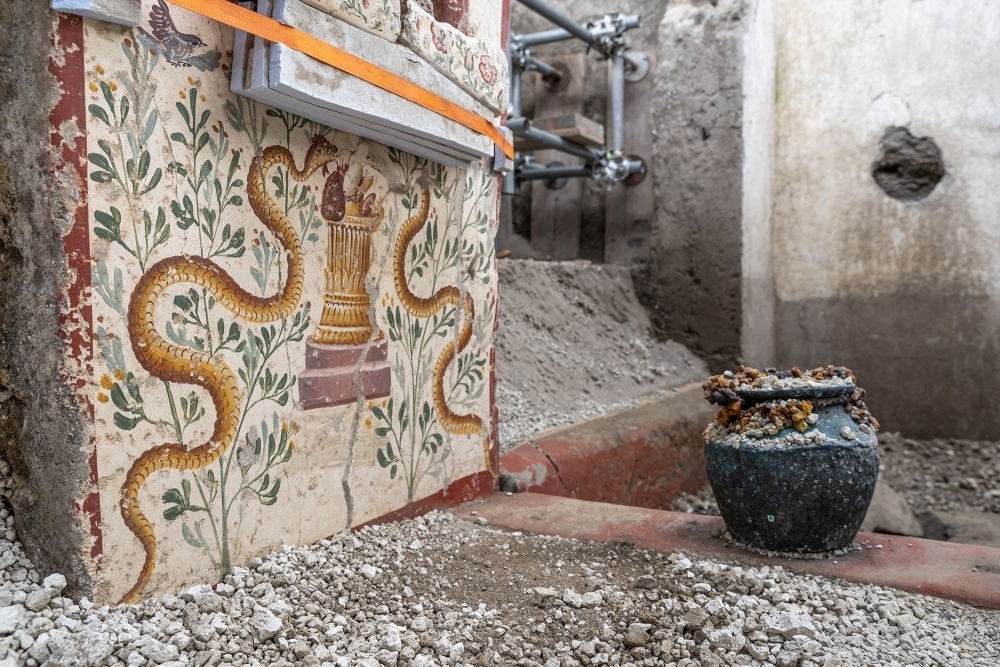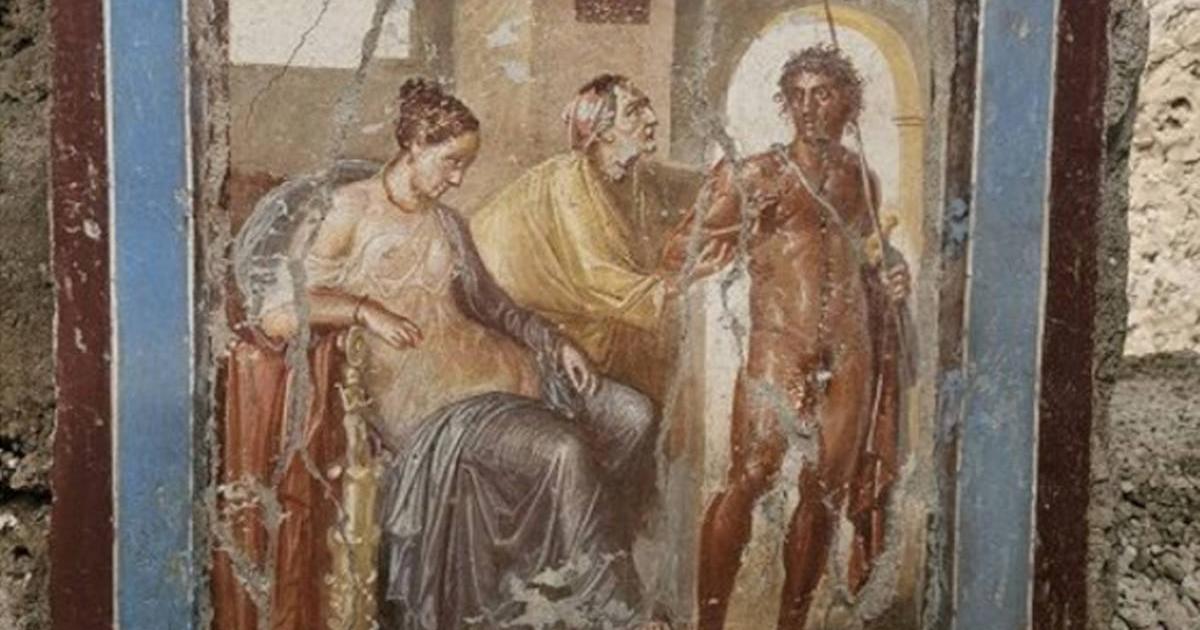Archaeologists in Pompeii have uncovered a small, distinct home preserved beneath volcanic ash from Mount Vesuvius’ eruption in 79 A.D. The dwelling, found within the Insula dei Casti Amanti, or House of Chaste Lovers area, retains well-preserved frescoes on its interior walls.
Unlike many of the larger homes in Pompeii, this compact space features surprisingly elaborate art, adding intrigue to the study of Pompeian domestic spaces. This unusual find has led researchers to reconsider the range of architectural and decorative styles present in ancient Pompeii.
The interior artwork largely draws from Greek mythology, with a prominent fresco of Hippolytus and Phaedra, two tragic figures from classical literature, which inspired the temporary name “House of Phaedra” for the home.
Additional smaller paintings within the home depict scenes involving these characters, suggesting an intentional emphasis on mythological themes. Such decor choices may indicate the homeowner’s cultural or personal interests, as well as the broader influence of Greek myths on Roman art.

Pompeii Discovery Reveals Small Home with Mythological Frescoes and Ritual Artifacts Preserved in Ash
Other mythological figures appear in the home’s artwork, including a satyr embracing a nymph and a pair believed to represent Venus and Adonis. Another fresco, though partially damaged, may portray the Judgement of Paris.
Each of these scenes enhances the richness of the decor and sheds light on the symbolic and aesthetic values of the time, highlighting how residents of Pompeii used mythology to adorn their living spaces.
In the courtyard, archaeologists found additional frescoes of plants, animals, and symbolic figures such as two snakes positioned around an altar. These images likely held ritual significance, as the altar may have served as a place for offerings.
Remarkably, some items from the last offering before the eruption have been preserved, including a ceramic incense burner, a scented lamp, colored marble fragments, and a small sculpture associated with Dionysus, giving clues to the spiritual practices of the home’s inhabitants.
This unique home, with its unusual layout and ornate decoration, differs significantly from neighboring structures, suggesting shifts in cultural and aesthetic preferences during Pompeii’s first century. The discoveries here may reveal evolving tastes in residential design and decor in ancient Roman society.
These findings, documented in a scientific paper in Pompeii’s archaeological park’s digital magazine, provide valuable context for understanding the diversity and complexity of life in Pompeii during this period.











































